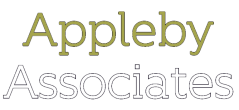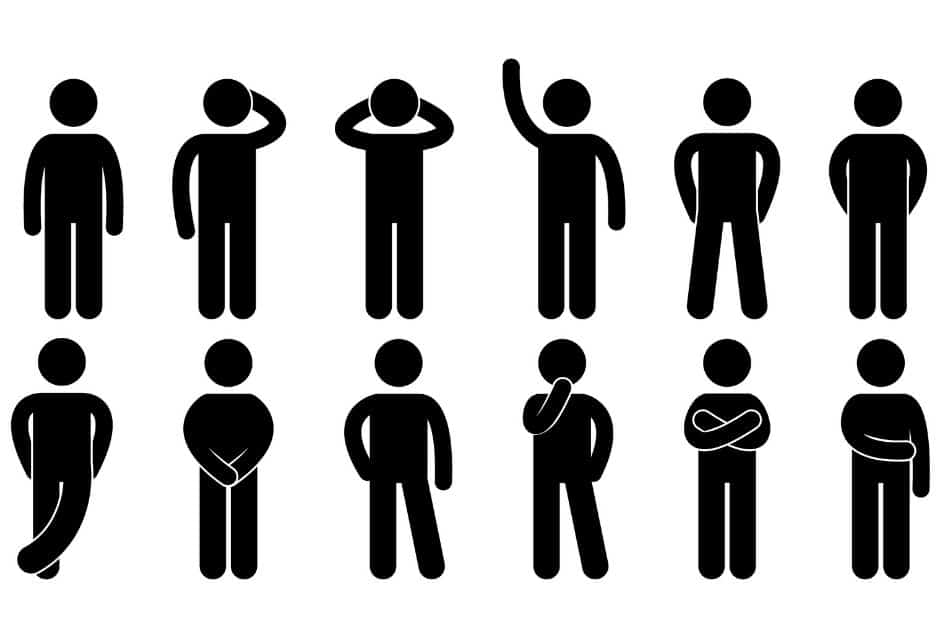The Importance of Body Language
While the key to success in both personal and professional relationships lies in your ability to communicate well, it’s not the words that you use but your nonverbal cues or “body language” that speak the loudest.
When we communicate with someone face to face, we pass information and understanding through 3 different elements – body language, voice, and words. However, the message isn’t communicated equally across all 3 with the suggested split being:
- Body Language– the visible actions that we show to others using all parts of our body – 55%
- Voice– the pitch, pace, tone, and volume of our voice – 38%
- Words– the actual words that make up our message – 7%
Many people often think the words make up most of the communication. In reality, it’s the visible things we show that communicate most of the message as this is where most people’s perceptions are formed – from what they can see.
In some instances, what comes out of your mouth and what you communicate through your body language may be two totally different things. If you say one thing, but your body language says something else, you will be sending out a mixed message. When faced with this, the listener has to choose whether to believe your verbal or nonverbal message. Since body language is a natural, unconscious language that broadcasts your true feelings and intentions, they’ll likely choose the nonverbal message.
So, whilst the actual words only make up 7% of the message, to reduce the risk of sending out mixed messages, it is important to think about how your own body language can work for you or against you. By being more aware, when having face-to-face conversations, you can come across with credibility, gravitas, and authority.
Six things that you can do to make body language work for you.
- Prepare, Prepare, Prepare
There is, at heart, only one fundamental question that an interviewer is looking for the answer to, which is: ‘How are you going to help me?’
To have the greatest chance of performing well, you need to know in advance, in relation to the role, where you are strong and where you are weak and then have strategies for dealing with both situations, so the following might help.
Before any interview, go through the job description and looking at the role and person specification, score each point 1 to 5, where 1 is a weakness and 5 is a strength.
Assume that any question asked on an area that has a score of 3 and below, is an area of relative weakness and anything scoring 4 and above is an area of relative strength.
Thorough preparation in terms of knowing what you offer, where you are strong and where your potential weakness lies, will allow you to work up answers to enable you to practise on how you want to come across and the message you want to convey. The more you practise, the more you’ll relax, the more confident you will become and the more consistently positive you’ll appear.
- Cultivate a Good Handshake
Thousands of words have been written around the subject of handshakes. Type into Google “how to cultivate a good handshake” and you will get over 46,000,000 results. Whether or not any of the analysis is true, what is undeniable is that a poor or weak handshake will at best be an unwanted distraction and at worst give the recipient a negative feeling about you.
Generally, a good handshake is firm, brief, free from nervous sweat and should encapsulate the following:
- Keep your body square with them
- Make strong eye contact and smile
- Make palm-to-palm contact
- Match their level of firmness
- Hold the grip for one second longer than you’re used to
- Body Language and Stance
It is said that people make up their minds about other people very quickly, often in the first few seconds of meeting them. By the time you have sat down, people will already have formed an opinion, just by how you walked into the room.
To be seen as an equal, you need to act like you belong there and walk in with purposeful, upright posture. You want to convey confidence, so you need your outward appearance of confidence believable.
If your meeting involves standing up, then you should aim for an upright open stance rather than sloping forwards, backwards or bent, as this upright position demonstrates adult, assertive but neutral behaviour, signifying that you have conviction and confidence in what you are saying.
When sitting, experts agree that aiming for a neutral posture is your best starting point, especially when listening to others. When you are talking, you may want to occasionally lean forward to emphasise a point but be aware of leaning in too much as it can be seen as overly aggressive or arrogant.
These neutral, open postures are the ones you should be aiming for, as they will then positively amplify any verbal message that you are conveying.
- Use Eye Contact
Eye contact is an essential part of any communication. Without it, people may find it difficult to fully relate to what you are saying in a meaningful way.
In her article “Eye contact is important (crucial really) in communication.” Erin Eatough, PhD found that making eye contact helped improve understanding. She found that when you share eye contact during a conversation, you’ll remember more of what the other person said, and they will retain more of what you said.
Tips for Making Eye Contact
- Make eye contact before you start speaking
- Maintain eye contact 50% of the time when speaking and 70% when listening
- Hold eye contact for about 4 – 5 seconds or as long as it takes to register the colour of their eyes
- Look at a spot on their nose, mouth, or chin. Imagine an inverted triangle connecting their eyes and mouth. Every five seconds, rotate which point of the triangle you are looking at
- To break direct eye contact, look away slowly as looking away too quickly can make you appear nervous or shy
As well as understanding how to make positive eye contact with an individual, when speaking to a group it is important to ensure that you engage with everyone present.
To do this, think of having individual mini conversations with one person in the group at a time. As you speak or respond to a question, focus on the most important person or the person that asked the question and look at that person as you finish your thought or sentence. As you begin a new sentence or idea, choose another person, and again look them in the eye as you finish your thought. Where possible, make sure that you eventually include everyone in the group.
- Smile
Your face is where most people will be looking when they are speaking to you. Smiling not only conveys a sense of confidence and positivity but can also help you feel calmer and more in control. It can also encourage an interviewer to want to get to know you better and help them to feel more relaxed.
However, there is no fixed formula so don’t try and overthink it. Essentially, smiling helps you build rapport with the interviewer, being seen as someone they can work with and who will be an asset to the team or business. Be warm, open, and enthusiastic, but don’t try to create an artificial persona. If you are quiet and softly spoken, be warm, open, and enthusiastic, quietly.
- Hand Gestures.
There are two good reasons why you should use hand gestures when you are talking.
- They can act as a prompt for you.
Canadian researchers found that hand gestures aided memory access to the person speaking, thereby helping them in the recall of the information so that they could tell more of the story.
- They can help others to remember you.
Hand gestures during a conversation help the listener to remember and recall what you said, as your hands can emphasise or reinforce key points and words.
A word of warning, hand gestures, like all other aspects of body language, will amplify what you are saying, so the mindset you want to have is: “whatever I say or do should reassure the listener that they made the right decision to invite me in to talk to them, I am not looking to justify why I am here”.
To sum up, like everything else, it is about being aware and noticing those tendencies that could work against you and those that will work for you, then practise, practise, practise.
Employers are looking for positive, enthusiastic candidates, so the more you can do to actively convey neutral or positive emotions as the backdrop to telling your story, the less likely it is that your interviewer will pick up mixed messages, as they see and hear a consistent mess
If you would like to find out more about this topic, contact us to book your free 90 minute personal 1:1 career consultation:

